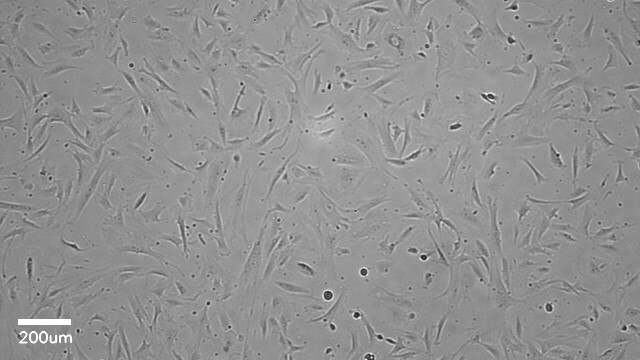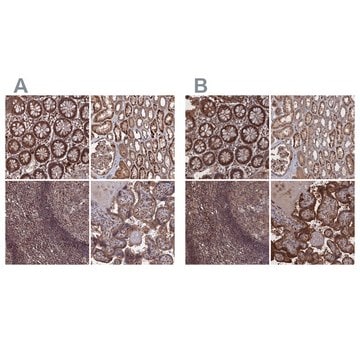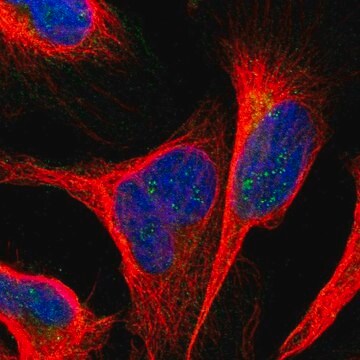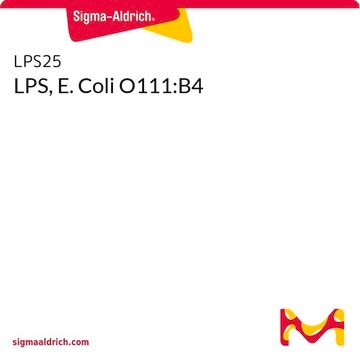HLP400
Normal Human Hepatic Kupffer Cells
Single-Donor Cryopreserved Kupffer cells isolated from human livers, high viability, and characterized by cell specific markers and response to LPS stimulation
동의어(들):
Homogenous population isolated from whole human livers
로그인조직 및 계약 가격 보기
모든 사진(1)
About This Item
UNSPSC 코드:
41106509
NACRES:
NA.81
추천 제품
생물학적 소스
human liver
양식
frozen liquid
포장
pkg of 1 vial (contains ≥0.25 million cells)
pkg of 1 vial (contains ≥0.5 million cells)
pkg of 1 vial (contains ≥1 million cells)
기술
cell culture | mammalian: suitable
색상
cloudy
저장 온도
-140 to -196°C
일반 설명
Lot specific orders are not able to be placed through the web. Contact your local sales rep for more details. Hepatic Kupffer Cells, also known as Browicz-Kupffer cells and stellate macrophages, are specialized macrophages in the liver that line the walls of the sinusoids. Kupffer cells can activate macrophages and are constantly exposed to gut-derived bacteria, microbial debris, and bacterial endotoxins. Hepatic Kupffer cells are intimately involved in the liver′s response to infection, toxins, ischemia, resection, and other stresses. Upon activation, Kupffer cells release various products, including cytokines, prostanoides, nitric oxide, and reactive oxygen species. These released molecules regulate other Kupffer cells and neighboring cells, such as Hepatocytes, Stellate cells, Endothelial cells, and other immune cells that traffic through the liver. Human hepatic Kupffer cells are often characterized using flow cytometry for population distributions, and are positive for CD11b, CD14, and CD68. In vitro, these cells do not proliferate and cannot be passaged.
애플리케이션
Kupffer cells are ideal in studies of: chronic liver injury, toxicity, inflammatory response activation, cell-cell signaling, NAFLD and NASH initiation and progression and more. We offer matched sets of Kupffer cells from same donor as Hepatocytes, which can be used for co-culture systems to better simulate the complex microenvironment of the liver and gain insights into various liver-related diseases and conditions.
특징 및 장점
Our cryopreserved hepatic Kupffer cells are derived from the human liver, with each donor providing documented consent for research use of non-transplantable organs or tissues. Following the primary culture, these cells are cryopreserved. Each lot undergoes testing for specific cell markers, fold activation of cytokine production following LPS stimulation and comes with a guarantee of ≥70% post-thaw viability. In addition, all cells have been tested for the absence of HIV, HBV, HCV, Syphillis and microbial contaminants (fungi, bacteria, and mycoplasma).
경고
Each donor is tested and found non-reactive to viral DNA from HIV-1, HIV-2, HTLV I, HTLV II, hepatitis B and hepatitis C. However, no known test can offer complete assurance that the viruses that cause HIV-1, HIV-2, HTLV I, HTLV II, hepatitis B and hepatitis C are not present. Proper precautions and biological containment should be taken when handling cells of human origin, due to their potential biohazardous nature. All human based products should be handled at a BSL-2 (Biosafety Level 2) or higher.
면책조항
RESEARCH USE ONLY. This product is regulated in France when intended to be used for scientific purposes, including for import and export activities (Article L 1211-1 paragraph 2 of the Public Health Code). The purchaser (i.e. enduser) is required to obtain an import authorization from the France Ministry of Research referred in the Article L1245-5-1 II. of Public Health Code. By ordering this product, you are confirming that you have obtained the proper import authorization.
Storage Class Code
10 - Combustible liquids
WGK
WGK 2
Flash Point (°F)
Not applicable
Flash Point (°C)
Not applicable
가장 최신 버전 중 하나를 선택하세요:
자사의 과학자팀은 생명 과학, 재료 과학, 화학 합성, 크로마토그래피, 분석 및 기타 많은 영역을 포함한 모든 과학 분야에 경험이 있습니다..
고객지원팀으로 연락바랍니다.





